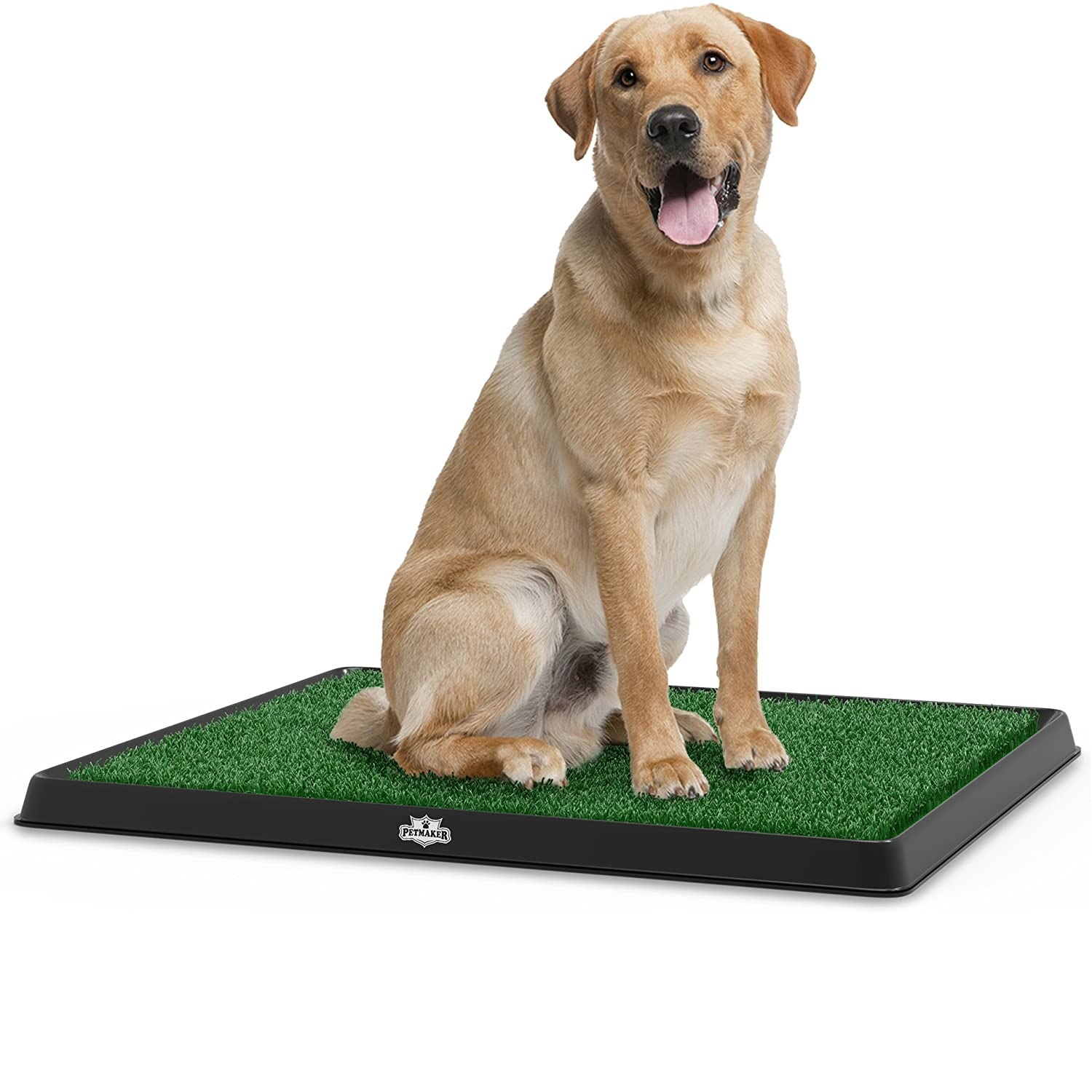
- Color Green
- Brand PETMAKER
- Material Synthetic
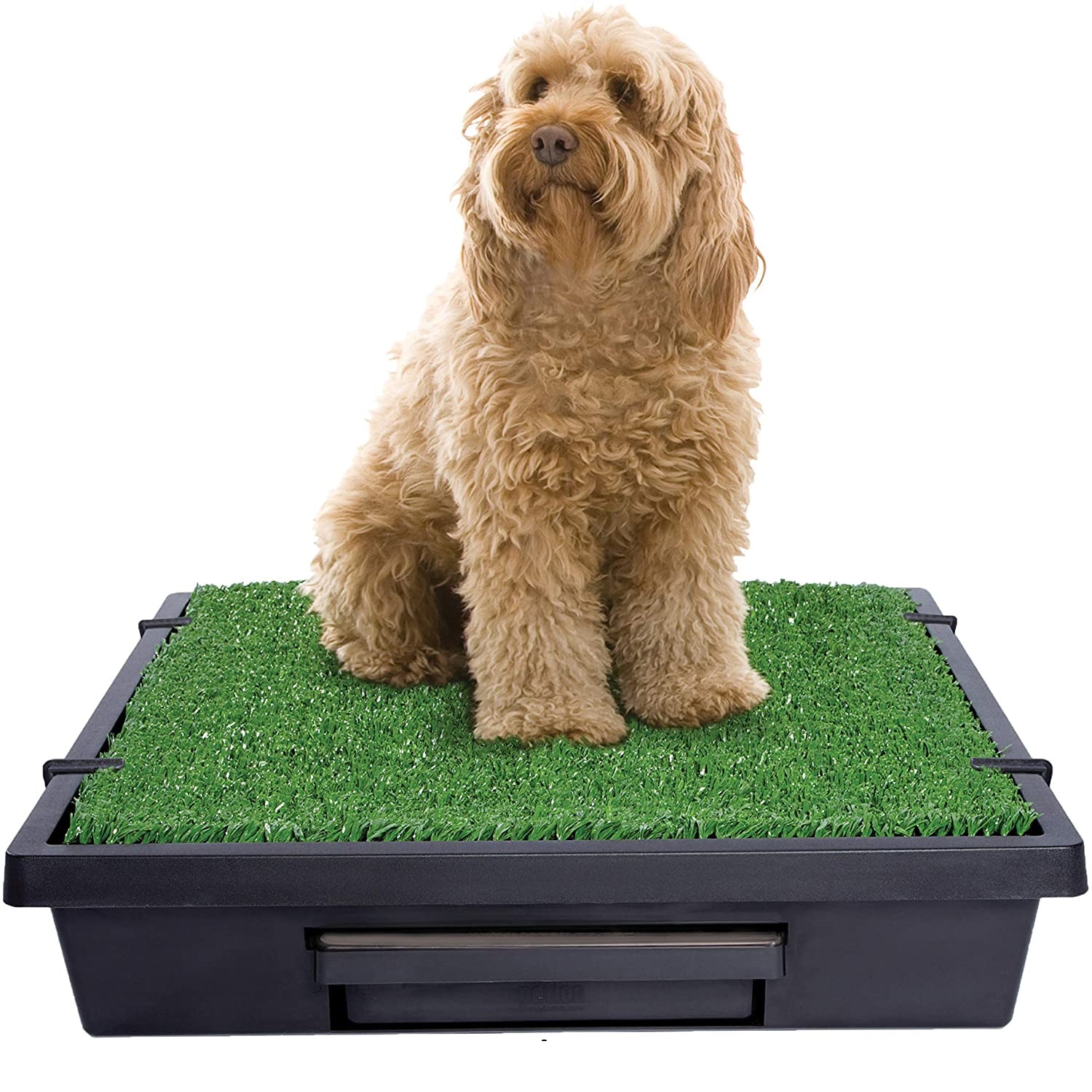
- Brand PetSafe
- Color Green
- Item Weight 8.72 Pounds
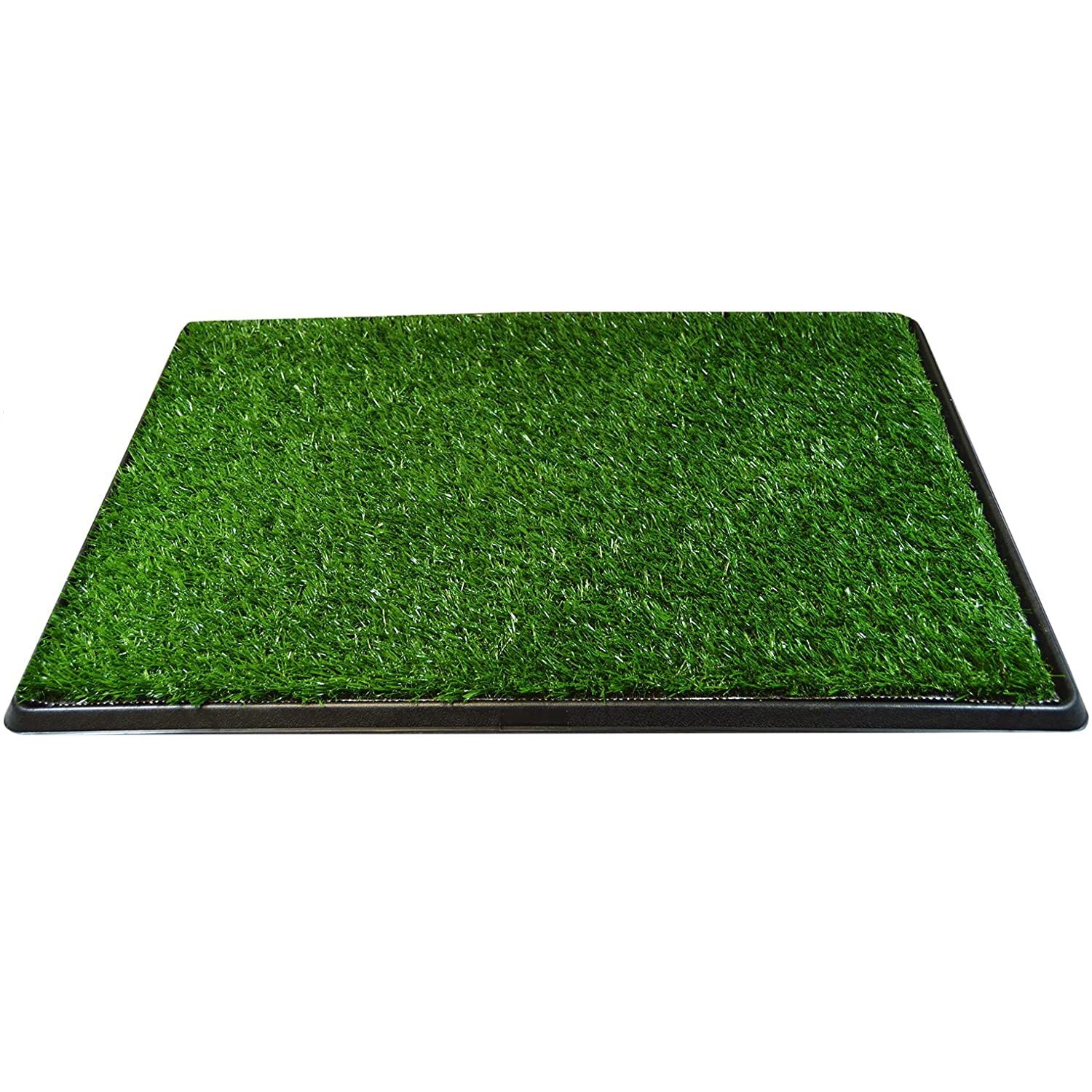
- Downtown Pet Supply
- 5 Pounds
- 30 x 20 x 1.5 inches
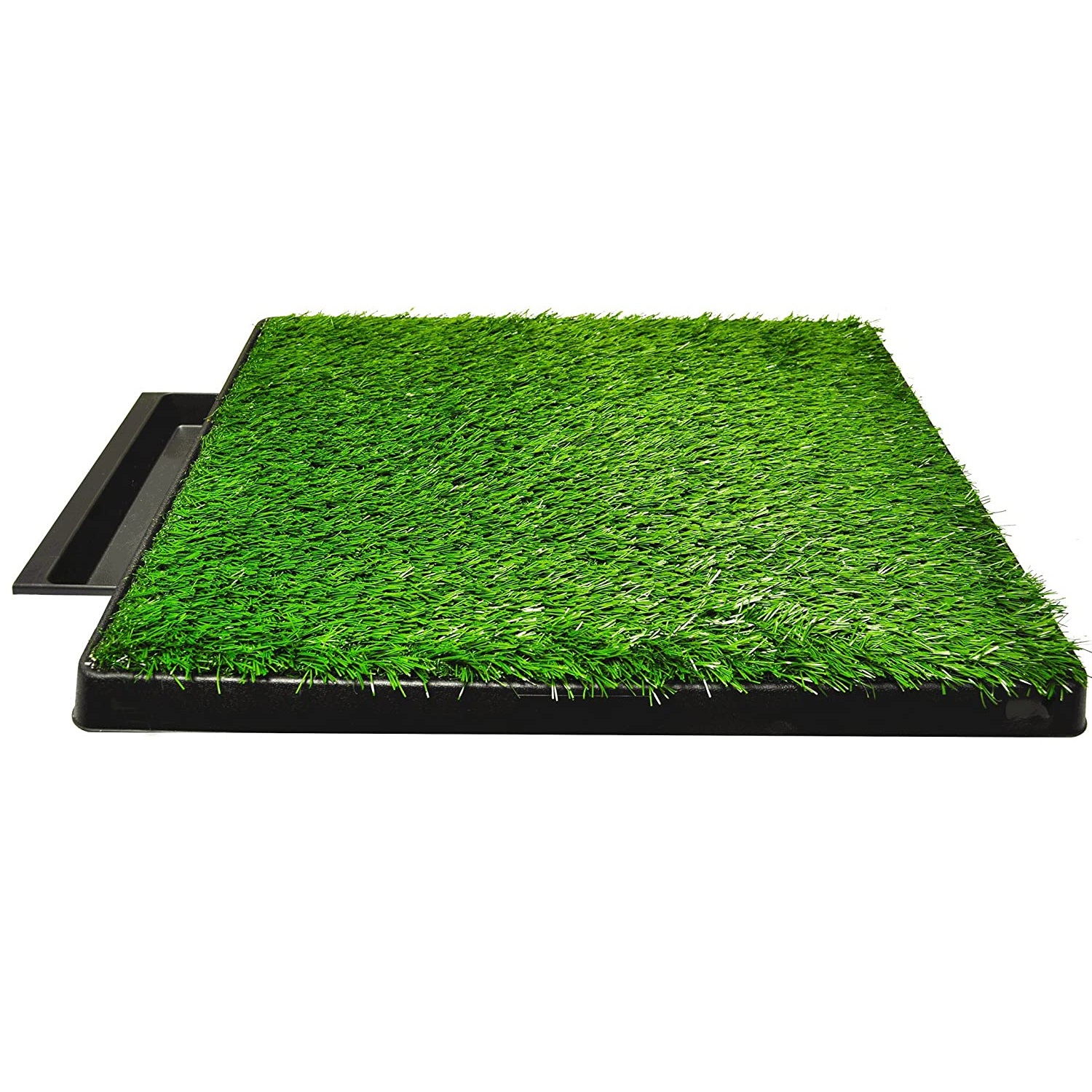
- Downtown Pet Supply
- 5.6 Pounds
- 25 x 20 x 2.8 inches
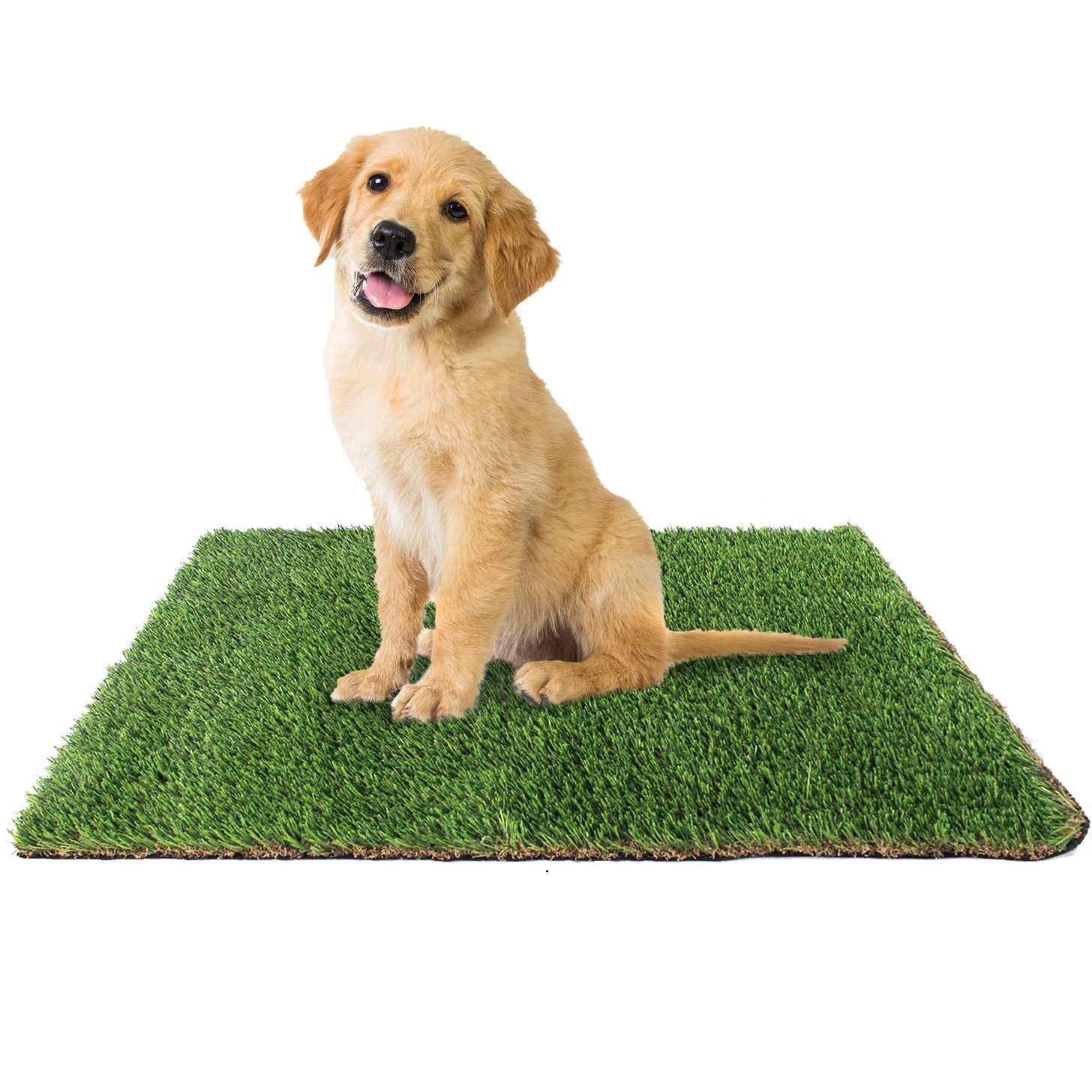
- Downtown Pet Supply
- 4.15 Pounds
- 31 x 6 x 5 inches
Choose the Best Artificial Grass for Dogs
Customer’s Choice: the Best Rated Artificial Grass for Dogs
3 users answered this survey. Please help us improve this review!
Artificial grass for dogs is fake, synthetic turf that functions in a similar way to real grass. The biggest difference between the two surfaces is how they feel – artificial turf may have more give when you step on it and less rolling resistance when your dog walks or runs across its surface. Some people also prefer artificial turf because of its low maintenance requirements – there are no watering schedules, mowing chores, or fertilizer necessary like with live plant material.
Many factors contribute to a healthy, happy dog including their diet, environment, and exercise routine. One factor that often is overlooked is what they are standing on. The wrong type of surface can lead to discomfort or even pain in your puppy’s paws. Even worse, it could cause them harm by irritating sensitive areas or causing a fall from slipping when wet.
This article will review some common questions about picking the best artificial grass for your dog as well as provide you with helpful tips and product recommendations so you can make an informed decision before installing anything in your backyard.
Table of Contents
PETMAKER Artificial Grass Puppy Pad – the Editor’s choice!
 The PETMAKER Artificial Grass Puppy Pads are the perfect potty training product for any pup, large or small. These clever pee pads are made of artificial grass and artificial turf that is free from harmful chemicals and toxins.
The PETMAKER Artificial Grass Puppy Pads are the perfect potty training product for any pup, large or small. These clever pee pads are made of artificial grass and artificial turf that is free from harmful chemicals and toxins.
Your furry friend will love playing on these unique mats with their paw-print side texture. This multi-use pet pad comes in a pack of one size that is good for puppies, seniors, toy breeds, and even cats.
The artificial grass surface is waterproof, yet soft, which makes it feel just like real grass without ruining your home with urine stains.
These Puppy Mats are perfect for indoor or outdoor use. They come in a variety of sizes and can be set on top of your pet’s regular bedding, on the floor by the door to trigger your cat to go outside, or over an area for litter-box training.
PetSafe Pet Loo Portable Outdoor or Indoor Grass Pad – the best for portability!
 This cleverly designed grass mat with a waste tray offers a convenient solution for all small pets who need a little relief but have no space available. It’s easy to carry around in your handbag or car with its plastic handle. It holds one cup of liquid at capacity so it can go longer between emptying times than other types of dog litter boxes. Comes in an assortment of colors too!
This cleverly designed grass mat with a waste tray offers a convenient solution for all small pets who need a little relief but have no space available. It’s easy to carry around in your handbag or car with its plastic handle. It holds one cup of liquid at capacity so it can go longer between emptying times than other types of dog litter boxes. Comes in an assortment of colors too!
Combining convenience and cleanliness, this product is perfect for traveling. Trusted by many RVers, campers, and apartment dwellers with smaller living spaces, the PetSafe Pet Loo is a great product for any pup or cat needing to go potty.
Downtown Pet Supply Dog Pee Potty Pad – the best for eliminating odors!
 Nothing is worse than stepping into your favorite room and smelling an overwhelming stench of wet dog urine. With the Downtown Pet Supply pad, you can provide a positive space for pets to go indoors while still using their natural instincts outside with grass that feels like real blades. The lightweight portable pad is perfect for indoor or outdoor use all year long.
Nothing is worse than stepping into your favorite room and smelling an overwhelming stench of wet dog urine. With the Downtown Pet Supply pad, you can provide a positive space for pets to go indoors while still using their natural instincts outside with grass that feels like real blades. The lightweight portable pad is perfect for indoor or outdoor use all year long.
You can feel better knowing that the hydro-ion technology will keep smells minimized, no matter how much the pup piddles!
This pad makes accidents easy to clean up and completely odorless, so you don’t have to worry about weird smells coming from your house. Dogs love its soft grass texture, which is great for their sensitive paw pads or delicate tummies.
Downtown Pet Supply Artificial Grass with Drawer and Wall – the best for design!
 It can be the perfect backyard for your pet. Keep it neat with the Downtown Pet Supply artificial grass, easy to clean with a drawer and doesn’t give off any foul odor as real lawns can. The pad comes in the size of 20 inches x 25 inches with a drawer so you’ll save up precious floor space as well.
It can be the perfect backyard for your pet. Keep it neat with the Downtown Pet Supply artificial grass, easy to clean with a drawer and doesn’t give off any foul odor as real lawns can. The pad comes in the size of 20 inches x 25 inches with a drawer so you’ll save up precious floor space as well.
Fits in perfectly with indoor plants or your outdoor spaces too, making it portable and waterproof whether indoors or out on your deck, patio, porch or balcony.
Its replacement turf is also offered should you need additional coverage. It mimics real grass but besides green, it also comes in red, blue or brown options.
With this Downton Pet Supply artificial grass, you won’t need to worry about mold or bacteria building up in litter. Also, its lightweight and easy-to-put together design means that as soon as your furry friend gets done using it, the mess is already contained.
Downtown Pet Supply Replacement Synthetic Grass – the best for the price!
 Unlike most synthetic pet turfs which often appear to be made from cheap and artificial materials, this Downtown Pet Supply replacement turf rug has a softer touch with four different color tones that give the appearance of real grass.
Unlike most synthetic pet turfs which often appear to be made from cheap and artificial materials, this Downtown Pet Supply replacement turf rug has a softer touch with four different color tones that give the appearance of real grass.
Durably coated with SBR latex, non-slip backing, and UV resistant polymer fibers it is not only enticing for your precious pets but also free from harmful toxins.
The strong material is perfect for sidewalks or driveways too, so spray away. And when wintertime rolls around and you’re back inside? Not a worry – this rug manages extreme temperature ranges and never feels rigid no matter what climate it’s exposed to.
This Downtown Pet Supply’s artificial grass provides an economical and practical alternative to a dog run or yard installation without having to sacrifice quality.
The Buyer’s Guide
Artificial Grass Safety for Dogs
Artificial grass is a wonderful surface for dogs to run and play on. This artificial turf is not only soft but will also provide traction for your canine companion in the event of wet conditions that can be helpful during hot summer days. However, what about safety? Does this material pose any hazards or risks that should be considered before installing an artificial lawn?
Let’s take a closer look at some of these concerns, as well as how pet owners can protect their animals while still enjoying the benefits of synthetic surfaces:
- Burns. Some people express concern over whether or not fake grass poses a fire hazard to pets and children who might meet it. NASA released results from tests conducted on AstroTurf brand products back in 1998. They found that the fake grass acted as a fire retardant and did not pose any serious risk when it was used in an open area without objects like furniture or other combustible materials nearby to fuel a blaze, which is what would most likely happen if this material were installed on dog runs where children can be present;
- Toxicity. Some people are also concerned with potential chemical toxicity from artificial turf fibers released into the air during installation, maintenance, wear and tear of use or deterioration. There have been no studies conducted that prove these concerns but there are steps pet owners should take to ensure their animals’ safety while still enjoying all the benefits of synthetic surfaces;
- Avoid installing near harsh chemicals. The general rule of thumb is that if you avoid placing artificial turf near harsh chemicals, such as pesticides and fertilizers, it will not deteriorate prematurely;
- Avoid installing near food areas. It’s also important to keep the surface away from any areas where food could be present or spilled because there are worries about possible contamination;
- Use artificial grass safely. Don’t allow your dog to chew on grass fibers; don’t let them eat dirt particles until they’ve been fully tested for safety; use a designated area for excretion (away from play areas) so feces can decompose without contaminating the carpeting fibers of fake turf;
- Be considerate with other pets. If you have other animals besides dogs in your household, make sure they don’t have access to the play area or any furnishings that might be found there;
- Be careful. If you’re worried about pets and children coming into contact with artificial turf, it may make sense for you to use a barrier around your dog run, like an invisible fence or physical barrier that can keep them away from this surface until it’s been fully tested for safety;
The Advantages of Fake Grass for Dogs:
- Avoid the high cost and potential stress of having to replace natural grass regularly;
- Dogs love fake grass as it is durable, safe, easy to maintain and clean. And there are no allergies or toxins;
- Even a large dog may not cause damage with minimal use on an artificial surface (in comparison to real grass). This means that you can have them outdoors for more time while still keeping up your home’s aesthetics;
Key Considerations When Choosing Dog-Friendly Artificial Grass
The first thing to consider is what kind of grass your dog prefers. Some dogs like the feel and texture of longer blades, while others prefer short grass that’s easier for them to clean their paws on. Dogs may like long blades that they can easily scratch their back against and dig their paws into while others prefer short blades where it’s easier for them to clean themselves off after playing around outside or relieving themselves on the lawn.
Your budget and your needs. Artificial grass or dogs varies in price depending on the size, thickness, coloration, and whether it’s backed by a warranty or not. Go over various reviews before buying so that you can get an idea of how much money you should be spending on this product.
Quality artificial grass ranges anywhere from $0.73 per square foot (with less durable material but good color selection) all the way up to over $20/square foot if you’re looking for an exclusive designer line. Other considerations include shipping costs and installation time. Some companies charge extra fees depending on how far away they have to ship it.
The size of the area where artificial grass for dogs will go. Think about if there are any animals living in close proximity to where you live (like snakes). If they have a habit of digging up plants left outside then maybe look into wired artificial lawns instead. A lot also depends on which outdoor space they’ll go to, like a fenced-in backyard or indoor living space. This is a personal preference, but the standard sizes are generally either 18 x 24 inches or 12 x 36 inches.
The accessibility and terrain of artificial grass for dogs. If your dog is going to be playing on this surface, you might want something with some grip. Artificial grass products also have different levels of softness depending on the type; synthetic turf can be more durable than other types as it’s made up of plastics that are specifically designed for outdoor use, whereas natural turf may need water and sunlight to remain healthy when outside.
Drainage. If there are other animals living with your pet, such as cats or horses, make sure any product you choose has good drainage properties so rainwater doesn’t pool at its surface once it spills onto the turf – if water pools too often over an extended period of time, mold growth may occur.
Durability. If you have a large yard, it might be worth spending some time considering how well artificial turf will hold up over long periods of use with heavy foot traffic or in high-traffic areas where lawn mowers can’t get full access.
Maintenance. How much time are you willing to spend on upkeep? Some artificial grass lawns require more maintenance than others do. If you’re looking for something low maintenance, go with synthetic grass. It doesn’t require mowing or watering and can be cleaned by sweeping most debris off the surface.
The downside is that it may not last as long as natural turf if your dog has a tendency to chew on things. Just use a hose and soap or water with dishwashing liquid. The downside is that you’ll need to replace them every few years as they do wear down over time due to weather conditions and general usage from pets.
Do you want it pre-cut and rolled up for easier transport? If so, make sure that there are at least 2 feet of space around all sides in order to accommodate this process. You can also purchase strips instead which makes cutting more manageable. Just be aware that they may not fit into your desired location as well as pre-cut rolls will.
Some dogs like scratching their paws on the ground while others prefer lying down; if one type of surface doesn’t suit them, try another. It’s important to take note that an artificial grass mat needs to be replaced from time to time.
Finally, pick an artificial turf product that is easy enough to install.
The Best Ways to Clean Artificial Grass for Dogs
1) Washing your artificial grass with water and soap is the easiest way to remove stains. This method also removes dirt, bacteria, allergens, and animal feces from the grass. Be sure not to use dishwasher detergent or bleach as these can do more harm than good for your turf! Drying after washing will reduce any chance of mold growth. It’s important that you let the sun dry before allowing pets back on the lawn.
2) Some artificial grass products are manufactured with antimicrobial protection or odor control. These features will help reduce the amount of bacteria and allergens on your turf, but they won’t remove them completely. If you want a product that can also fight odors without worrying about color fading, choose one made from polypropylene instead of nylon. Polypropylene is more expensive though; it is important to consider how often you’ll be washing before deciding between these two options.
3) If your lawn has been left in place for too long, chances are that mold growth has already begun. Mold is bad because it produces toxins harmful to both humans and pets alike; if this problem isn’t addressed quickly enough then health problems may result.
The best way to kill mold is with bleach or boiling water. Mix a solution of one tablespoon of chlorine bleach per gallon of warm water and pour it over the entire lawn. Allow this to sit for at least five minutes before scrubbing away any remaining residue with your hands or a brush, then rinse off all excess chemicals with clear water.
4) If you just need to clean specific areas (such as where pets are playing), try using an acidic cleaner instead. An example would be vinegar mixed in equal parts with mineral spirits so that each mixture has about two cups of total volume. The cleaner needs to stay on the surface for ten minutes prior to being wiped up or rinsed down, but once done scrub the area thoroughly.
The Best Way to Lay Artificial Grass for Dogs:
- When installing artificial grass, it’s important to keep in mind that dogs will be walking on the ground too. That being said, avoid mats or a loose pile;
- For best results, lay out an even layer of mulch 7.5 – 12 inches thick and let sit for 30 days before laying your turf. This helps with drainage and odor;
- It’s also advised to use some sort of adhesive underneath your turf if you want permanent installation because dog urine can seep through the fibers otherwise. Make sure to choose one that is compatible with pets;
- You also want to use glue that is either water or UV resistant. Silicone sealants are great for both of these types of glues because they don’t break down under sun exposure like other adhesives do. For example, the Dow Corning’s silicone sealant can be used with hot melt, contact adhesive and pressure-sensitive “Tackifier” that helps it bond better in high temperatures;
- The next step after laying the turf is adding a layer of sand onto your yard – about 12 inches thick (or more if you have heavy traffic). This will help absorb any small pieces that may come loose from the artificial grass over time as well as keep moisture levels at an even level so no matter where on the yard you are, the ground is going to be fairly dry;
- Finally, for a neat appearance and tidy garden beds or paths that don’t look out of place next to your lawn area, it’s important to plant some shrubs around the edges – just make sure there’s enough room for them as they grow;
FAQ
What length of artificial grass is best for dogs?
The length of artificial grass is determined by the size and breed of your dog. If you have a large, long-haired dog that sheds, then it may be best to use an inch longer than what he or she typically would need for more coverage from shedding debris. However, if you have a small short-haired dog with smooth fur coats, they will require less length than their body size suggests because these breeds do not shed as much hair and are not as likely to get dirty from rolling in dirt patches on the ground.
If the dog has allergies or object sensitivities on their paws, soft blades with gentle fibers may help prevent allergic reactions to grasses from allergens like pollen and mold spores. Alternatively, dogs might prefer a more rugged surface such as sand turf over fake grass because it feels softer against their paw pads than some other surfaces where they could get calluses or abrasions while running around outside playing fetch.
Can dogs pee and poop on artificial grass?
Yes, it is possible that dogs can urinate and defecate on artificial grass. However, this depends on the dog’s size and age as well as their individual temperament. Some will be able to excrete anywhere they please while others will only use designated spots in your yard for bathroom breaks or even go off-property to poop!
If you’re interested in installing artificial grass for your pup, then it’s important to realize that there is a small chance they will go potty on the surface. However, this may be offset by many other reasons why opting out of natural turf might suit you better. Artificial surfaces can resist water and are less likely to stain or harbor odor-causing bacteria like those found living naturally in soil; allowing them to stay clean much easier.
Additionally, because these carpets do not need watering or fertilizing, some users save money from decreased expenses while others find themselves with more free time as upkeep becomes less frequent.
How do you get rid of dog urine smell on artificial grass?
If you have the misfortune of having a dog with a notoriously bad aim, one solution is to purchase an artificial grass cleaner. This will help remove any stains or smells that your dog has left behind on the lawn and can be purchased at most pet stores.
What are the disadvantages of artificial grass for dogs?
The disadvantages of artificial grass are primarily related to aesthetics in that some people prefer natural-looking landscapes while others want an urban feel like you see on TV shows where everything is fake. This can affect your decision on which brand or style to choose since different products have pros/cons for both types of customers. There are also disadvantages such as decreased durability if you live somewhere hot.
Can you pressure wash artificial grass?
Artificial grass surfaces can be pressure washed with a hose and nozzle. They do not need to be replaced if they’re regularly maintained this way. The most important thing is that your dog’s paws are clean before he or she walks on the surface because dirt will scratch it up easily.
Can you vacuum artificial grass?
Yes, you can vacuum artificial grass with a regular household vacuum. When vacuuming, make sure to use the upholstery attachment or tuck-in head and watch out for any loose straws that may come undone. You should also be mindful of the height of your handle so it doesn’t get caught on anything such as furniture legs or baseboards when vacuuming close to them.
Can dogs rip up fake grass?
Yes, but it is unlikely. Dogs will usually just scratch the surface and leave grass clippings behind. install artificial grass that is resistant to scratching and has some kind of backing on the bottom so that they don’t sink into the ground too much.
Are artificial grasses too hot for dogs?
Some artificial grasses are made with a high quality, durable backing that will prevent the foam from getting too hot on dogs. Others have been known to get so hot as to boil eggs in just an hour or two! The best way to ensure you pick one that is safe for pets is by checking the specifications of each material, which should list its insulation qualities and whether it can be used outdoors.
Can my dog be allergic to artificial grasses like Astroturf?
Artificial grasses (including Astroturf) are not typically an allergen for dogs, but some pets may be allergic to the substances used in their construction. It is best to find out what type of artificial grass you have before deciding if your pet will react well or poorly to it.
Some people also experience respiratory problems when exposed to these materials over time due to the sensitivity of the nose and mouth lining. Allergies caused by exposure usually manifest themselves within twenty minutes after coming into contact with the allergen and can include skin irritation, sneezing or coughing.
Is artificial grass worth the money?
Artificial grass does require some investment, but it lasts for years. In the end, it is a great deal less expensive than continually replacing your lawn with new sod and watering/mowing. Artificial turf also requires no fertilizer or pesticides, so you won’t have to worry about these chemicals in your dog’s environment.
The best artificial grasses are those that offer durability and resilience as well as providing an aesthetically pleasing appearance – both qualities that make them worth considering if they can meet all other requirements like attractiveness to pets and children.
Useful Video: What are the 5 Best Artificial Grass Turfs for Dogs?
Final thoughts
The right choice of artificial grass for your pup can lead to a healthier, happier dog. If you’re not sure which product is best for them or have any other questions about choosing the perfect one, this guide can help you.

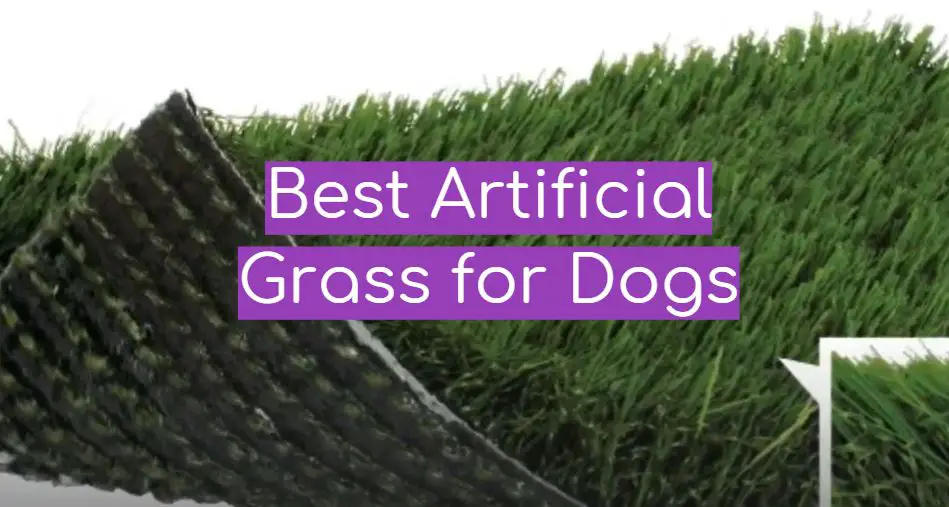
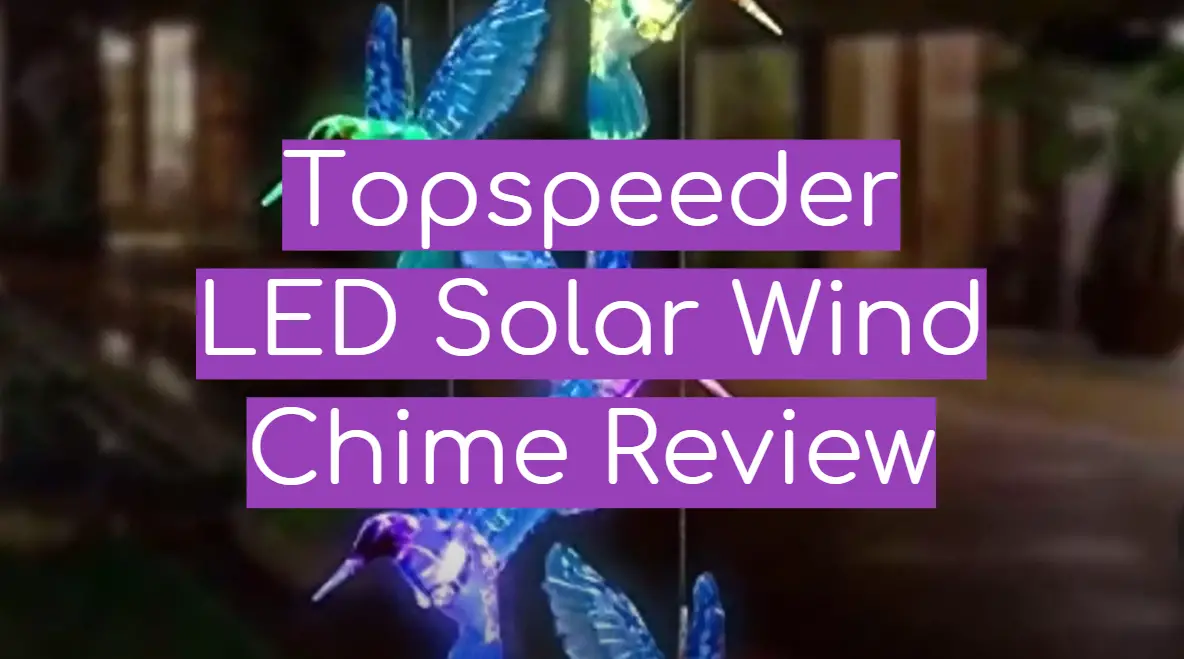
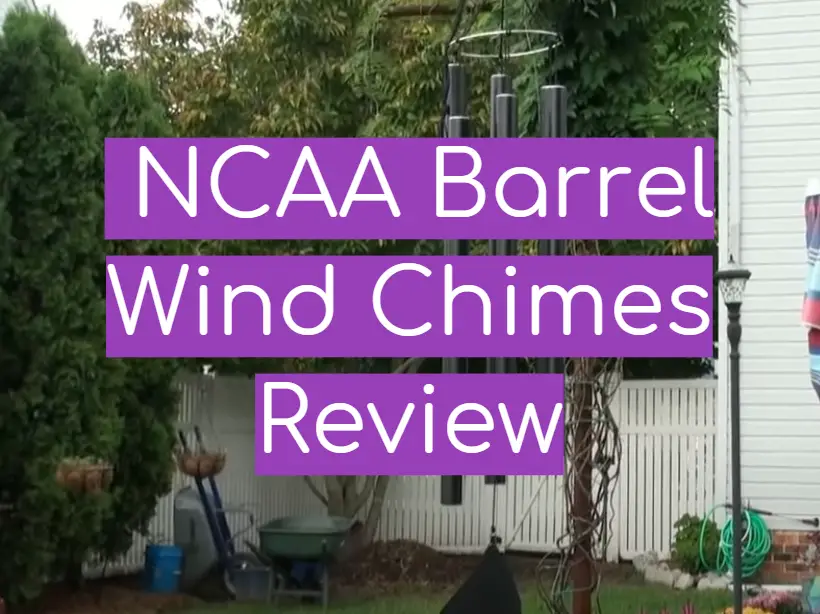
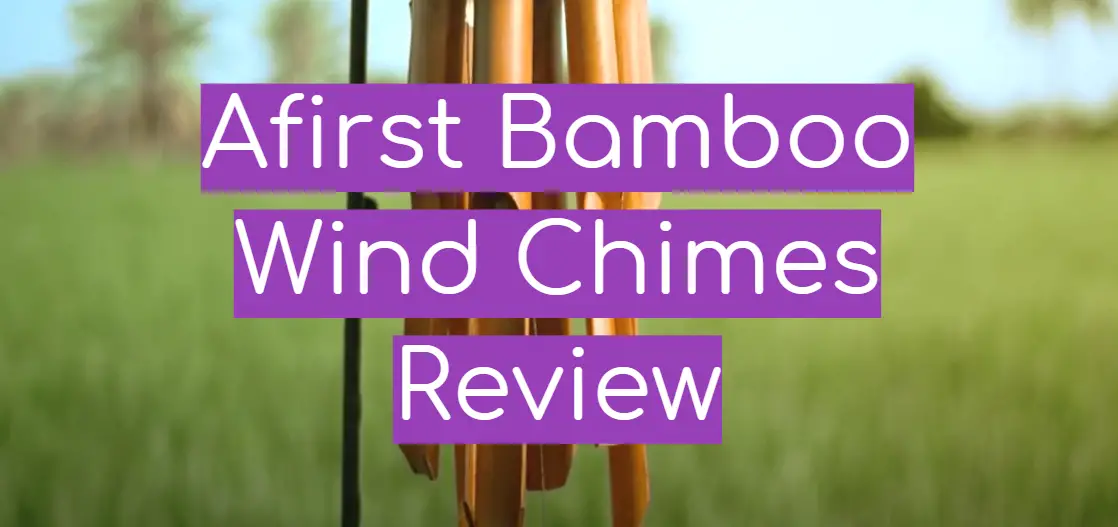

Leave a Reply